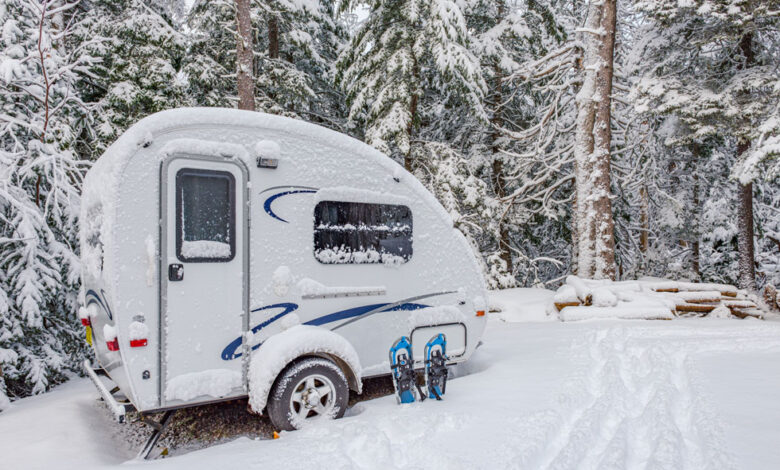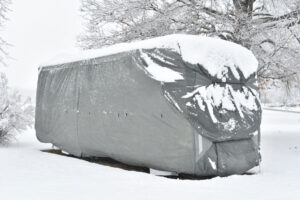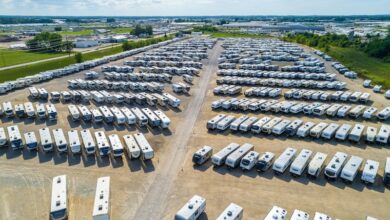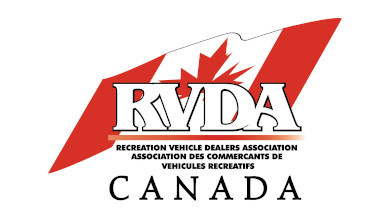Preparing for Winter in Your Parts & Services Department
Ask yourself these questions to get ready for a new season of profits.

Depending on the location of your RV business, winterizing might have a different meaning to you and your customers.
For instance, if your RV business is in Quartzite, Arizona, your definition of winterizing might include having a substantial volume of and variety of accessories, parts and materials that boondocking RVers might need and want during their winter stay.
However, if your RV business is in Fargo, North Dakota, your definition of winterizing might relate to those accessories, parts and materials that your customers require to store their RV during the winter season. And storage or winterizing preparations might be services that your business offers as a source of extra income during the winter season.
What if your RV business is located on a major route for RVers traveling to the warmer climes? Perhaps you offer towing and mobile service for those customers who might experience maintenance or repair incidents that require a different mix of parts and materials for this period.
What To Consider in Each Location
Suppose your RV business is at a destination location for wintering RVers. Here are some questions that you might ask to determine the mix and depth of parts and accessories inventory to carry:
- What is the period of the wintering season?
- How many weeks/months must you order in advance of this season to ensure an adequate supply of accessories, parts and materials when the first RVers arrive?
- How many months of supply should you order?
- What discounts or other terms can you obtain from your suppliers?
- What new accessories were offered at the most recent industry Open House or that you noticed in recent issues of RV PRO that you think will be interesting for your customers?
- Were there any deals offered if you ordered at the show or within a specified time?

If your RV business is in a location where winters can be extreme and some of your regular customers don’t use their RV during these months, then the following are some questions you could be asking and answering to align your parts and accessories inventory with the anticipated demand.
- Do you offer storage for your customers?
- Do you offer winterizing services where your technicians prepare the RV for the winter?
- Do you have winterizing packages available in your parts and accessories department?
- Are these winterizing packages different for the different classes of RVs that are in your service market?
If you are fortunate to have your RV business on a popular travel route for RVers who are heading for warmer areas during the winter, perhaps these are some questions you could ask regarding your parts and accessories inventory.
- What type of maintenance and repairs have been requested in previous years?
- How many of these jobs required parts and/or accessories to be ordered?
- How quickly can parts and accessories be obtained from your suppliers?
- How many customers required a tow to get to your location, and how did they arrange for that service?
Who Are Your Winter Customers?
Depending on your geographic location, your winter customer base might be different than that in other seasons.
For instance, if you are in a winter destination for RVers, perhaps many of them might be full-timers with Class As. These customers might want to upgrade their RV during their camping time while they are exploring the local area with their towed vehicle.
If you are in a geographic area that experiences cold and snowy winters, then you might offer specials on accessory upgrades while the RV is in storage. These specials might include pickup and delivery of the RV from the customer’s storage location. If your customer will not be using the RV during the winter, then you might not have to stock as many items because you can order them. This step might require communication between the parts department and the service department to coordinate the installation with the receipt date for the goods.
Who Are Your Winter Suppliers?
Regardless of your location, it is important to consider the sources available for the procurement of the parts, accessories and materials related to winterizing your customers’ RVs. Some factors that you might consider are:
- What is the lead time for these goods?
- What is the source country for these goods, and are there any tariffs that might increase your cost and the selling price to the customer?
- Could other RV businesses be a source for items in the event of an urgent need?
- What are the policies of your primary suppliers regarding shipping costs, order minimums, returns, fill rates, etc., that might lead you to prefer one supplier over the others?
One More Factor To Consider
What input have you received from the managers of the RV sales department and the service department regarding their operating plans during the winter period?
Has the RV sales manager considered installing any accessories on RVs on the lot? What brand, model and type of RVs will be arriving in this period that might require parts and accessories to be installed?
Will the service manager be offering any winter specials to keep the technicians busy? What parts and accessories will be required to support these specials in the volume that the service manager anticipates?
Getting the Word Out
Regardless of where your RV business is located and what your definition of winterizing might include, what methods do you use to let the RV community know of the services that you offer?
- Do you keep a record of customers in your DMS database? Do you identify local customers and transient customers differently? When transacting business with each customer, do your associates:
-
- Confirm contact information — email, phone number, address(es)?
- Determine preferred method of contact?
- Inquire as to any social media that each customer prefers?
- Provide your RV business contact information that could include any social media sites you use, your business website and an invitation to enroll in your digital and/or print newsletter?
-
By asking and answering these and other questions now, you have a better chance of being prepared to efficiently and profitably serve your customers during the winter period in your area.
Bonus From July 2025 RV PRO
Coincidentally, as I was reviewing my column before sending it to the editors, I glanced through the July issue that I received in today’s mail and noted the “Summer RV Maintenance and Pre-Trip Checklist” on page 22.
What a great idea! You might consider developing winterizing checklists for your RV customers and RV winter inventory checklists for your parts and accessories department. Hopefully you still have your July issue, or go online and search for it in back issues of RV PRO.
So, will this be a “winter of discontent” in your RV business or one of effective parts and accessories contents?
Tips for Helping Customers Winterize Their RV
The key element to RV winterization is preventing your water pipes and lines from freezing or bursting in the winter months. If your customer is in an area where their RV will encounter temperatures near or below freezing for more than 24 hours, their rig will need to be winterized, according to Go RVing.
Protecting the RV’s plumbing system from frigid weather is the focus and entails bypassing the water heater and draining tanks. Winterizing also includes cleaning, removing food items that might perish or explode under freezing temps, sealing cracks and holes to deter rodents and pests, and more.
Here’s a list that service techs should follow when winterizing an RV:
- Drain and clean black and gray holding tanks and the fresh water tank.
- Flush out water lines, open low-point drains on the RV’s exterior and empty the water heater.
- Bypass the water heater.
- Apply RV antifreeze to the plumbing system.
- Give the interior a thorough cleaning and remove food and other items that could perish or freeze in cold temps. Clothing or valuables should also be removed so they aren’t stored in the rig all winter.
- Place mothballs, mouse traps or other rodent and pest deterrents in the RV while it’s in storage.
- Remove dirt and grime from the RV’s exterior by washing and waxing it before storage.
- Inspect the roof, window and door seals, and the underbelly of the RV for any cracks or holes that need to be resealed or repaired.
- Remove propane tanks and RV batteries for safe storage. Batteries should be kept in a warm location where they can be charged in the off-season.
- Cover the RV with a UV-protected and mildew-resistant RV cover, especially if the rig will be stored outside. Consider purchasing separate RV tire covers if the unit cover does not protect the tires.



